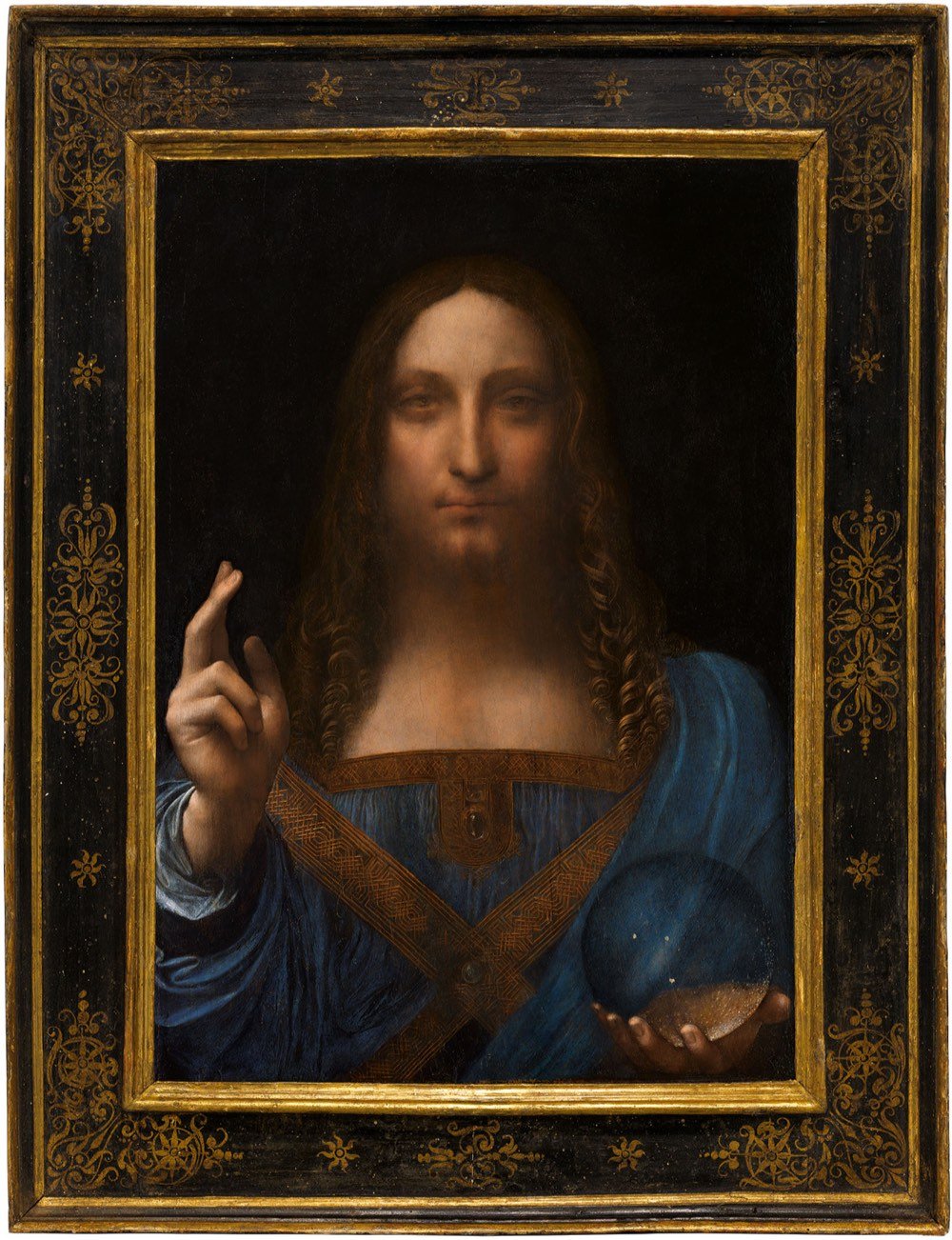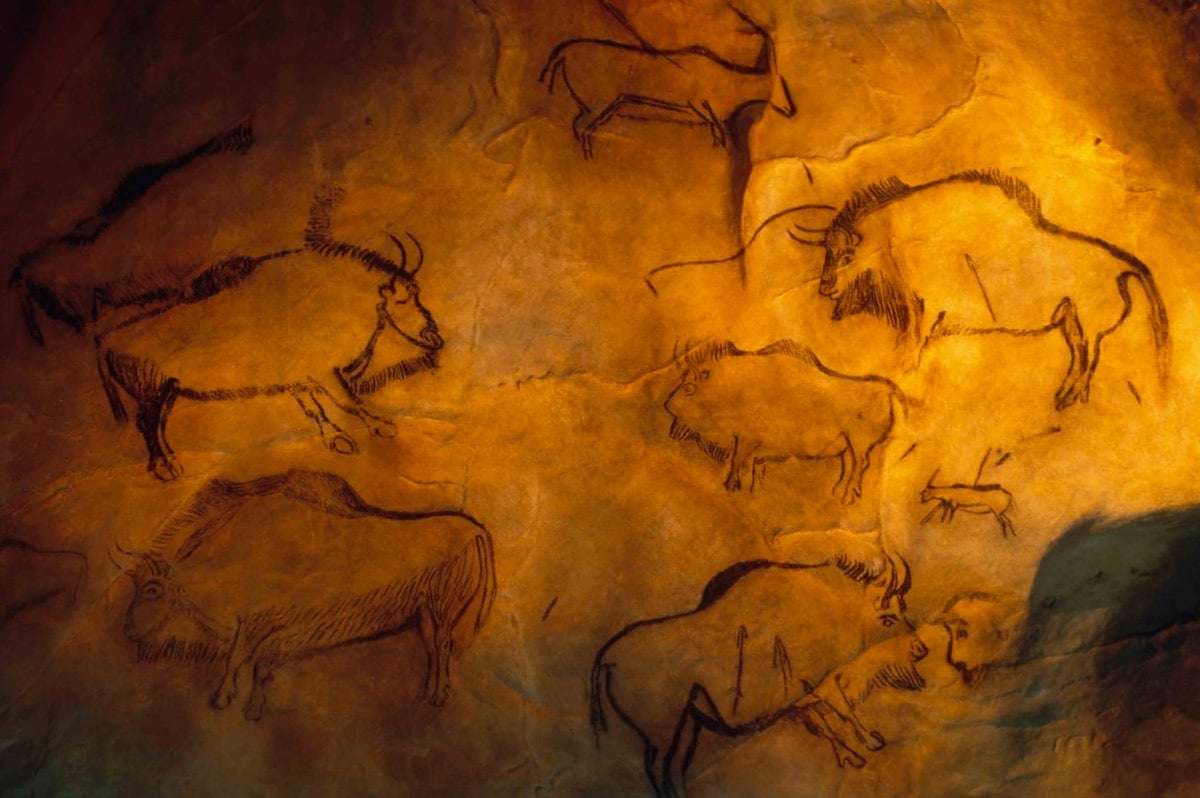From Jerry Saltz, failed artist and art critic for New York Magazine, a list of 33 rules on how to be a successful artist.
Lesson 3: Feel Free to Imitate. We all start as copycats, people who make pastiches of other people’s work. Fine! Do that. However, when you do this, focus, start to feel the sense of possibility in making all these things your own — even when the ideas, tools, and moves come from other artists. Whenever you make anything, think of yourself as entering a gigantic stadium filled with ideas, avenues, ways, means, and materials. And possibilities. Make these things yours. This is your house now.
And on the other side of the same coin:
Lesson 12: Know What You Hate. It is probably you. Make a list of three artists whose work you despise. Make a list of five things about each artist that you do not like; be as specific as possible. Often there’s something about what these artists do that you share. Really think about this.

Only fewer than 20 of Leonardo da Vinci’s paintings are known to have survived until the present day. In 2005, a painting of Leonardo’s called Salvator Mundi was rediscovered after its provenance had been forgotten hundreds of years ago, to the point that it sold for £45 at an auction in 1958. In November, Christie’s auction house is selling the painting.
The painting disappeared from 1763 until 1900 when — its authorship by Leonardo, origins and illustrious royal history entirely forgotten — it was acquired from Sir Charles Robinson, who purchased the picture as a work by Leonardo’s follower, Bernardino Luini, for the Cook Collection, Doughty House, Richmond. By this time, Christ’s face and hair had been extensively repainted. A photograph taken in 1912 records the work’s altered appearance.
In the dispersal of the Cook Collection, the work was ultimately consigned to auction in 1958 where it fetched £45, after which it disappeared once again for nearly 50 years, emerging only in 2005 — its history still forgotten — when it was purchased from an American estate.
That estate sale in 2005 sold the painting for only $10,000…it was believed to be a Leonardo copy. The painting is estimated to sell at a price of $100 million but seeing how the last two sales netted $75 million and $127.5 million, it would be easy to see that going higher.
Update: New York magazine art critic Jerry Saltz says that Salvator Mundi is probably fake (or at least not by Leonardo).
I’m no art historian or any kind of expert in old masters. But I’ve looked at art for almost 50 years and one look at this painting tells me it’s no Leonardo. The painting is absolutely dead. Its surface is inert, varnished, lurid, scrubbed over, and repainted so many times that it looks simultaneously new and old. This explains why Christie’s pitches it with vague terms like “mysterious,” filled with “aura,” and something that “could go viral.” Go viral? As a poster, maybe. A two-dimensional ersatz dashboard Jesus.
Why else do I think this is a sham? Experts estimate that there are only 15 to 20 existing da Vinci paintings. Not a single one of them pictures a person straight on like this one. There is also not a single painting picturing an individual Jesus either. All of his paintings, even single portraits, depict figures in far more complex poses. Even the figure that comes remotely close to this painting, Saint John the Baptist, also from 1500, gives us a turning, young, randy-looking man with hair utterly different from and much more developed in terms of painting than the few curls Christie’s is raving about in their picture.
Update: Salvator Mundi sold for $450 million, “obliterating the previous world record for the most expensive work of art at auction”. On Twitter, Saltz called the buyer “a sucker” and posted an image of the painting with Trump’s face pasted on it. Buuuuuuuurn.
Update: According to this piece in Narativ, this painting might now be lost and could factor into the Mueller investigation into the Trump-Russia connection.
Questions are being raised. First, why did the Crown Prince of Saudi Arabia, an art novice, buy the masterpiece? Secondly, why did he overpay for it by $300 million? Even for the stupendously wealthy Prince Mohammed bin Salman, that’s not just a simple rounding error. How do you misplace a $450 million painting anyway?
We can also reveal Special Counsel Robert Mueller is investigating both the buyer and the seller of the Da Vinci masterpiece as part of the Trump-Russia investigation.
All the intrigue suits Salvator Mundi’s already storied past well, but as I write this, no-one has seen the rare masterpiece in over a year, and its exact whereabouts have been unknown for over 100 days.
(via @tedgioia)

New York Magazine art critic Jerry Saltz has presumably been to most of the finest museums in the world, seen the works of the great masters, and generally spent a lifetime looking at great art. But he encountered what he calls “the most powerful artwork I have ever seen” in a French cave with drawings from about 13,000 years ago.
The idea that perspective was invented in Florence in 1414 collapsed in an instant. Here, larger mammals are in front of smaller ones who trail behind; animals at the back of packs are smaller than those in front. There’s also what’s called reverse perspective, the sort of system used in China, where closer things are rendered smaller than farther things. Elsewhere, an ibex is depicted from behind and over the shoulder — an incredibly sophisticated perspective. One horse is seen from a highly accomplished three-quarters view. Imagery seemed adjusted for curvatures and protrusions of the walls in the same ways that Renaissance frescoes adjust for distortions, distance, and odd viewing angles. I saw a bison with one horn curving up, the other curving down — either from battle or birth. Whatever the cause, this was something that had been seen and intentionally rendered.
Just penciled this in for my next trip to France, whenever that is.







Stay Connected